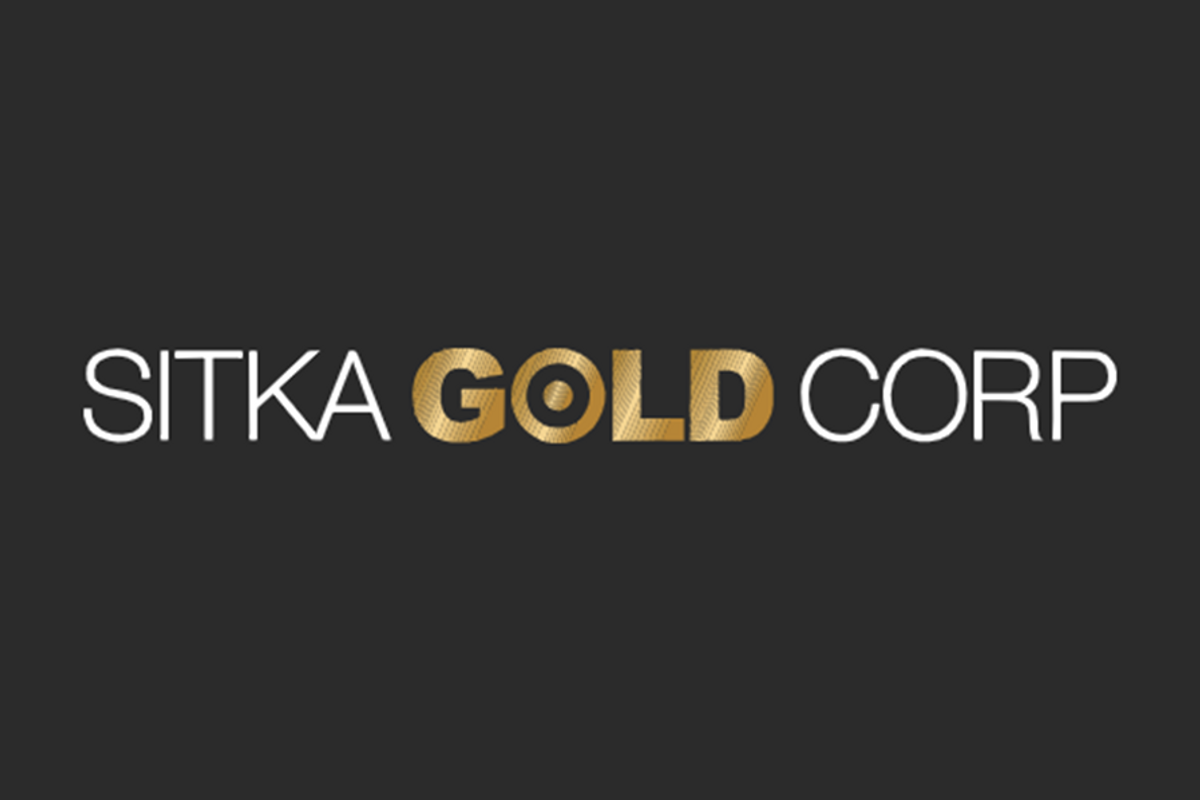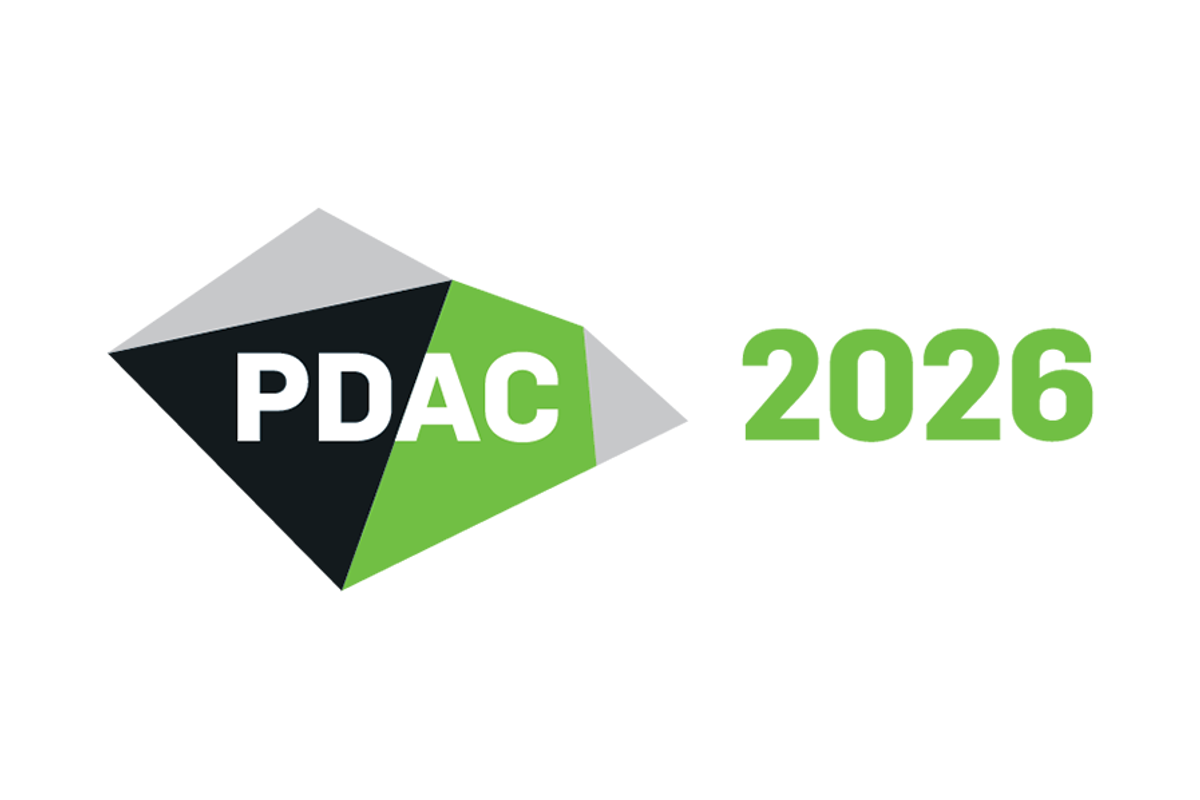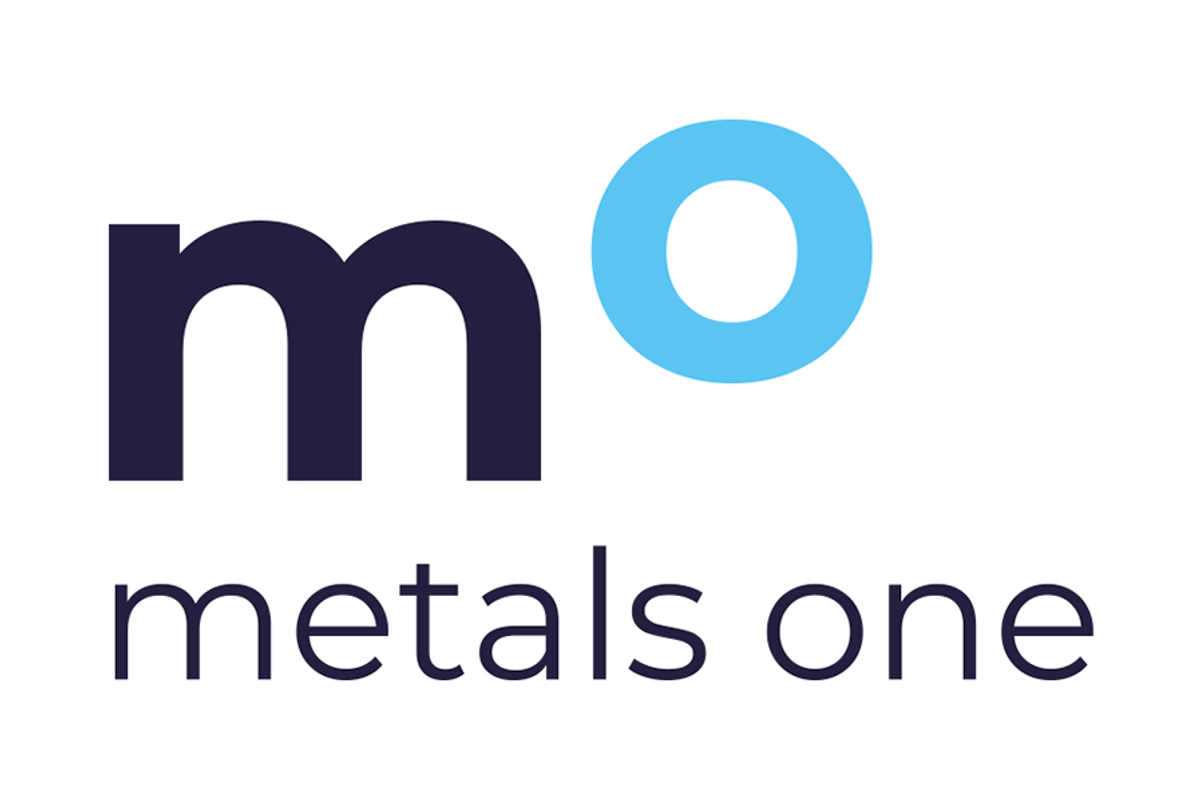
April 22, 2025
Sitka Gold Corp. (TSXV: SIG) (FSE: 1RF) (OTCQB: SITKF) ("Sitka" or the "Company") is pleased to announce recently received assay results from its ongoing 2025 diamond drilling campaign at its road accessible RC Gold Project ("RC Gold" or the "Project") located approximately 100 km east of Dawson City in Yukon's prolific Tombstone Gold Belt. Results from DDRCCC-25-075 ("Hole 75") returned 352.8 metres of 1.55 g/t gold, including 108.9 metres of 3.27 g/t gold and 45.0 metres of 4.52 g/t gold. Hole 75, which had over 130 instances of visible gold observed during logging of the drill core, was the first of two diamond drill holes completed at RC Gold during this year's winter drilling campaign. DDRCCC-25-076 ("Hole 76"), the second drill hole completed this winter, was drilled to a depth of 810.8 metres, the deepest hole ever drilled at Blackjack, for a total of 1,526.8 metres of diamond drilling completed during the winter drilling campaign. Assays are currently pending for Hole 76 where over 60 instances of visible gold were observed (see Figures 1 and 7).
- DDRCC-25-075 ("Hole 75") delivers best high-grade intercept drilled to date at Blackjack with 352.8 m of 1.55 g/t gold including 108.9 m of 3.27 g/t gold and 45.0 m of 4.52 g/t gold
- Hole 75 is the first diamond drill hole to be completed as part of a fully funded 30,000 m drilling program planned at RC Gold for 2025
- Results from Hole 75 extend the high-grade gold zone discovered late last year in Hole 68
- Assay results from Hole 75 showcase the persistence and continuity of this higher-grade gold zone (see Table 3) with grades that appear to be increasing with depth
- These results further endorse a potential underground mining scenario below Blackjack's existing pit-constrained mineral resources of 1.29 Moz grading 1.01 g/t gold indicated and 1.04 Moz grading 0.94 g/t gold inferred
- Assays are currently pending for DDRCCC-25-076 ("Hole 76") which was drilled to a hole depth of 810.8 m, the deepest hole drilled to date at Blackjack, and had over 60 instances of visible gold observed in the drill core (see Figures 1 and 7).
Table 1: Highlights from most recent assay results
| Hole ID | From (m) | To (m) | Interval (m)* | Gold (g/t) |
| DDRCCC-25-075 | 341.5 | 694.3 | 352.8 | 1.55 |
| including | 501.4 | 610.3 | 108.9 | 3.27 |
| including | 501.4 | 513.0 | 11.6 | 4.44 |
| and | 539.4 | 584.4 | 45.0 | 4.52 |
*Intervals are drilled core length as insufficient drilling has been completed at this time to calculate true widths.
"2025 is off to an excellent start with the first drill hole of the year producing some of the best gold intercepts encountered to date at our RC Gold project," commented Cor Coe, Director and CEO of Sitka Gold. "Initial observations of Hole 75, including numerous instances of visible gold, indicated that we had drilled through an area of strong gold mineralization and this has now been confirmed by these assay results. Hole 75 continues to highlight the quality of the gold system present at the Blackjack deposit while greatly expanding the higher-grade gold zone discovered at depth late last year in Hole 68 which remains open both laterally and to depth. The increasing gold values we are seeing at depth appear to have the grades and continuity required for a possible underground extraction scenario below the current pit constrained resources at Blackjack and suggest that we could be getting closer to the source of the Blackjack gold deposit as we drill deeper into the system.
"These results build on our previous success at Blackjack and show that we have really just started to unlock the potential of this large, contiguous 431 square kilometre gold district where 11 intrusions have been identified on surface to date, all of which have associated intrusion related gold mineralization present and are considered high-priority targets for future exploration. The fact that we have been able to produce a pit-constrained mineral resource estimate of 1.3 million ounces of indicated gold at 1.01 g/t gold and 1.0 million ounces of inferred gold at 0.94 g/t gold at the Blackjack deposit with just 18,799 metres of drilling underscores the potential of the additional 30,000 metres of drilling planned at RC Gold for this year. We are now waiting on the results from hole 76, which again produced multiple instances of visible gold and extended the vertical depth of mineralization at the Blackjack zone to over 700 metres from surface, being the deepest drill hole completed to date at the RC Gold project. 2025 is shaping up as an exciting and pivotal year for Sitka as we push to continue creating shareholder value by rapidly advancing our flagship RC Gold project."
Figure 1: Cross Section for holes DDRCCC-25-075 and DDRCCC-25-076. Hole 75 is approximately a 70 metre step-out from Hole 68 which intersected 93.0 m of 2.57 g/t gold near the bottom of the hole.
To view an enhanced version of this graphic, please visit:
https://images.newsfilecorp.com/files/6144/249328_bf622703d4b8c841_002full.jpg
Figure 2: Plan map of drilling at the Blackjack Deposit showing the location of holes DDRCCC-25-075 (this release), -076 as well as DDRCCC-24-068.
To view an enhanced version of this graphic, please visit:
https://images.newsfilecorp.com/files/6144/249328_bf622703d4b8c841_003full.jpg
Figure 3: The Clear Creek Intrusive Complex in the western portion of the RC Gold Project is a cluster of intrusions all with known gold mineralization and numerous current drill target areas highlighted by the magenta hatched areas.
To view an enhanced version of this graphic, please visit:
https://images.newsfilecorp.com/files/6144/249328_bf622703d4b8c841_004full.jpg
Figure 4: Longitudinal section of completed drill holes at the Blackjack Zone. Higher-grade mineralization is defined in a southeast plunging mineralized corridor with gold grades increasing at depth, as observed with the increasing prevalence of higher-grade gold results in recently completed drill core (purple colour), and suggests that drilling is vectoring towards the source of this gold system. The pit-constrained mineral resource shell from the 2023 MRE is shown in orange with the added resources from the updated MRE published earlier this year shown in yellow (see news release dated February 26, 2025).
To view an enhanced version of this graphic, please visit:
https://images.newsfilecorp.com/files/6144/249328_bf622703d4b8c841_005full.jpg
Figure 5: Examples of drill core from the interval beginning at 539.4 m which contains 45.0 m of 4.52 g/t gold that shows strongly altered and variably textured quartz monzonite. Pink flagging tape marks veins where occurrences of visible gold were noted by Sitka's geological crew.
To view an enhanced version of this graphic, please visit:
https://images.newsfilecorp.com/files/6144/249328_bf622703d4b8c841_006full.jpg
Figure 6: Examples of instances of visible gold observed throughout hole DDRCCC-25-075. Visible gold is found in sheeted quartz veins and is often associated with bismuthinite, scheelite, and arsenopyrite. Additional images of visible gold observed in Hole 75 can be viewed HERE.
To view an enhanced version of this graphic, please visit:
https://images.newsfilecorp.com/files/6144/249328_bf622703d4b8c841_007full.jpg
Table 2 - Summary of significant drill hole assays from this release
| Hole ID | From (m) | To (m) | Length (m) | Gold (g/t) |
| DDRCCC-25-075 | 116.3 | 123.0 | 6.7 | 2.21 |
| including | 116.3 | 117.3 | 1.0 | 12.05 |
| and | 341.5 | 694.3 | 352.8 | 1.55 |
| including | 469.5 | 470.5 | 1.0 | 8.22 |
| including | 407.0 | 694.3 | 287.3 | 1.80 |
| including | 486.5 | 487.6 | 1.1 | 7.99 |
| including | 409.5 | 694.3 | 284.8 | 1.82 |
| including | 409.5 | 610.3 | 200.7 | 2.35 |
| including | 501.4 | 610.3 | 108.9 | 3.27 |
| including | 501.4 | 513.0 | 11.6 | 4.44 |
| including | 504.4 | 505.4 | 1.0 | 8.73 |
| including | 539.4 | 584.4 | 45.0 | 4.52 |
| including | 556.4 | 558.0 | 1.6 | 9.71 |
| including | 648.9 | 694.3 | 45.4 | 0.92 |
*Intervals are drilled core length as insufficient drilling has been completed at this time to calculate true widths.
DDRCCC-25-075
Drill hole DDRCCC-25-075 was drilled to a length of 715.97 metres at an azimuth of 037o and a dip of -65o to step out from the high-grade mineralization that returned 93.0 metres of 2.57 g/t gold starting at 589.5 metres in Hole 68 last year and extended gold mineralization at depth approximately 70 metres to the northeast of Hole 68. This drill hole intersected several broad zones of feldspar megacrystic, quartz monzonite cross cutting hornfels biotite schist of the Yuzesyu Formation. These intrusions, and locally the metasediments, are cut by abundant 1-2 centimetre sheeted quartz veins with centimetre scale quartz sericite alteration halos. A significant zone of strongly altered, variable textured quartz monzonite was intersected from ~350 m to 620 metres. Over 130 instances of visible gold were observed in sheeted quartz veins, often associated with bismuthinite, scheelite, and arsenopyrite throughout the interval, consistent with observations of mineral associations in all previous drilling.
Table 3 - Individual assay intervals for the composite 45 metres of 4.52 g/t gold in Hole 75 which demonstrate the continuous and persistent high-grade gold mineralization at depth

To view an enhanced version of this graphic, please visit:
https://images.newsfilecorp.com/files/6144/249328_bf622703d4b8c841_008full.jpg
Figure 7: Examples of instances of visible gold observed throughout hole DDRCCC-25-076. Visible gold is found in sheeted quartz veins and is often associated with bismuthinite, scheelite, and arsenopyrite. Additional images of visible gold observed in Hole 76 can be viewed HERE.
To view an enhanced version of this graphic, please visit:
https://images.newsfilecorp.com/files/6144/249328_sitkafig7.jpg
Quality Assurance/Quality Control
On receipt from the drill site, the HTW/NTW-sized drill core was systematically logged for geological attributes, photographed and sampled at Sitka's core logging facility. Sample lengths as small as 0.3 m were used to isolate features of interest, otherwise a default 2 m downhole sample length was used. Each sample is identified by a unique sample tag number which is placed in the bag containing the core to be assayed. Core was cut in half lengthwise along a predetermined line, with one-half (same half, consistently) collected for analysis and one-half stored as a record. Standard reference materials, blanks and duplicate samples were inserted by Sitka personnel at regular intervals into the sample stream. Bagged samples were placed in secure bins to ensure integrity during transport. They were delivered by Sitka personnel or a contract expeditor to ALS Laboratories' preparatory facility in Whitehorse, Yukon, with analyses completed in North Vancouver.
ALS is accredited to ISO 17025:2005 UKAS ref. 4028 for its laboratory analysis. Samples were crushed by ALS to over 70 per cent passing below two millimetres and split using a riffle splitter. One-thousand-gram splits were pulverized to over 85 per cent passing below 75 microns. Gold determinations are by fire assay with an inductively coupled plasma mass spectroscopy (ICP-AES) finish on 50 g subsamples of the prepared pulp (ALS code: Au-ICP-22). Any sample returning over 10 g/t gold was re-analyzed by fire assay with a gravimetric finish on a 50 g subsample (ALS code: Au-GRA21). In addition, a 51-element analysis was performed on a 0.5 g subsample of the prepared pulps by an aqua regia digestion followed by an inductively coupled plasma mass spectroscopy (ICP-MS) finish (ALS code: ME-MS41).
About the Flagship RC Gold Project
The RC Gold Project consists of a 431 square kilometre contiguous district-scale land package located in the heart of Yukon's Tombstone Gold Belt. The project is located approximately 100 kilometres east of Dawson City, which has a 5,000 foot paved runway, and is accessed via a secondary gravel road from the Klondike Highway which is usable year-round and is an approximate 2 hour drive from Dawson City. It is the largest consolidated land package strategically positioned mid-way between the Eagle Gold Mine and the past producing Brewery Creek Gold Mine.
The RC Gold Project now has pit-constrained mineral resources that are contained in two zones: the Blackjack and Eiger gold deposits with 1,291,000 ounces of gold grading 1.01 g/t gold in an indicated category and 1,044,000 ounces of gold grading 0.94 g/t gold in an inferred category at Blackjack and 440,000 ounces of gold grading 0.50 g/t gold in an inferred category at Eiger. These resource estimate numbers are supported by the recently updated technical report for RC Gold, prepared in accordance with NI 43-101 standards, entitled "Clear Creek Property, RC Gold Project NI 43-101 Technical Report Dawson Mining District, Yukon Territory", prepared by Ronald G. Simpson, P. Geo., of GeoSim Services Inc. with an effective date of January 21, 2025. This report is available on SEDAR+ (http://www.sedarplus.ca) and on the Company's website (www.sitkagoldcorp.com).
Both of these deposits begin at surface, are potentially open pit minable and amenable to heap leaching, with initial bottle roll tests indicating that the gold is not refractory and has high gold recoveries of up to 94% with minimal NaCN consumption (see News Release July 13, 2022).
As of the end of 2024, 72 diamond drill holes have been drilled into this system by the Company for a total of approximately 25,136 metres. Other targets drilled to date include the Saddle, Josephine, Rhosgobel and Pukelman zones. The resource expansion drilling in 2023 at Blackjack produced results of up to 219.0 m of 1.34 g/t gold Including 124.8 m of 2.01 g/t gold and 55.0 m of 3.11 g/t gold in drill hole DDRCCC-23-047 (see news release dated September 26, 2023) and in 2024 results of up to 678.1 metres of 1.04 g/t gold starting from surface in DDRCCC-24-068, including 409.5 metres of 1.36 g/t gold, 93.0 metres of 2.57 g/t gold and 5.5 metres of 17.59 g/t gold (see news release dated October 21, 2024).
A planned 30,000 metre diamond drilling program for 2025 is currently underway at RC Gold.
RC Gold Deposit Model
Exploration on the Property has mainly focused on identifying an intrusion-related gold system ("IRGS"). The Property is within the Tombstone Gold Belt which is the prominent host to IRGS deposits within the Tintina Gold Province in Yukon and Alaska. Notable deposits from the belt include: Fort Knox Mine in Alaska with current Proven and Probable Reserves of 230 million tonnes at 0.3 g/t gold (2.471 million ounces; Sims 2018)(1); Eagle Gold Mine with current Measured and Indicated Resources of 233 million tonnes at a grade of 0.57 g/t gold at the Eagle Main Zone (4.303 million ounces; Harvey et al, 2022)(2); the Brewery Creek deposit with current Indicated Mineral Resource of 22.2 million tonnes at a gold grade of 1.11 g/t (0.789 million ounces; Hulse et al. 2020)(3); the Florin Gold deposit with a current Inferred Mineral Resource of 170.99 million tonnes grading 0.45 g/t gold (2.47 million ounces; Simpson 2021)(4); the AurMac Project with an Inferred Mineral Resource of 347.49 million tonnes grading 0.63 gram per tonne gold (7.00 million ounces)(5) and the Valley Deposit, with a current Indicated Mineral Resource of 4.05 million oz gold at 1.66 g/t gold and an additional Inferred Mineral Resource of 3.26 million oz at 1.25 g/t gold(6). The technical and scientific information disclosed from neighboring properties does not necessarily apply to the current project or property being disclosed.
(1) Sims J. Fort Knox Mine Fairbanks North Star Borough, Alaska, USA National Instrument 43-101 Technical Report. June 11, 2018. https://s2.q4cdn.com/496390694/files/doc_downloads...
(2) Harvey N., Gray P., Winterton J., Jutras M., Levy M.,Technical Report for the Eagle Gold Mine, Yukon Territory, Canada. Victoria Gold Corp. December 31, 2022. https://vgcx.com/site/assets/files/6534/vgcx_-_202...
(3) Hulse D, Emanuel C, Cook C. NI 43-101 Technical Report on Mineral Resources. Gustavson Associates. May 31, 2020. https://minedocs.com/22/Brewery-Creek-PEA-01182022...
(4) Simpson R. Florin Gold Project NI 43-101 Technical Report. Geosim Services Inc. April 21, 2021. https://sedar.com/GetFile.do?lang=EN&docClass=24&i... d=4984158
(5) Thornton T., Jutras M., Malhotra D. Technical Report Aurmac Property Mayo Mining District, Yukon Territory, Canada. JDS Energy and Mining Inc. February 6, 2024. https://banyangold.com/site/assets/files/5251/bany...
(6) Burrell H., Redmond D.J., Haggarty P., Rogue Gold Project: NI 43-101 Technical Report and Mineral Resource Estimate, Yukon Territory, Canada. Snowline Gold Corp. May 15, 2024. https://snowlinegold.com
Upcoming Events
Sitka Gold will be attending and/or presenting at the following events*:
- 121 Mining Investment - London, England: May 12 - 13, 2025
- Canaccord Global Metals and Mining Conference - Henderson, NV: May 20 - 22, 2025
- Yukon Mining Alliance - Dawson City, Yukon: July 9 - 14, 2025
- Takestock Stampede - Calgary, AB: July 2, 2025
*All events are subject to change.
About Sitka Gold Corp.
Sitka Gold Corp. is a well-funded mineral exploration company headquartered in Canada with over $25 million in its treasury and no debt. The Company is managed by a team of experienced industry professionals and is focused on exploring for economically viable mineral deposits with its primary emphasis on gold, silver and copper mineral properties of merit. Sitka is currently advancing its 100% owned, 431 square kilometre flagship RC Gold Project located within the Tombstone Gold Belt in the Yukon Territory. The Company is also advancing the Alpha Gold Project in Nevada and currently has drill permits for its Burro Creek Gold and Silver Project in Arizona and the Coppermine River Project in Nunavut.
*For more detailed information on the Company's properties please visit our website at www.sitkagoldcorp.com.
The scientific and technical content of this news release has been reviewed and approved by Gilles Dessureau, P.Geo., Vice President of Exploration of the Company, and a Qualified Person (QP) as defined by National Instrument 43-101.
ON BEHALF OF THE BOARD OF DIRECTORS OF
SITKA GOLD CORP.
"Donald Penner"
President and Director
For more information contact:
Donald Penner
President & Director
778-212-1950
dpenner@sitkagoldcorp.com
or
Cor Coe
CEO & Director
604-817-4753
ccoe@sitkagoldcorp.com
Neither TSX Venture Exchange nor its Regulation Services Provider (as that term is defined in policies of the TSX Venture Exchange) accepts responsibility for the adequacy or accuracy of this release.
Cautionary and Forward-Looking Statements
This release includes certain statements and information that may constitute forward-looking information within the meaning of applicable Canadian securities laws. Forward-Looking statements relate to future events or future performance and reflect the expectations or beliefs of management of the Company regarding future events. Generally, forward-looking statements and information can be identified by the use of forward-looking terminology such as "intends" or "anticipates", or variations of such words and phrases or statements that certain actions, events or results "may", "could", "should", "would" or "occur". This information and these statements, referred to herein as "forward‐looking statements", are not historical facts, are made as of the date of this news release and include without limitation, statements regarding discussions of future plans, estimates and forecasts and statements as to management's expectations and intentions and the Company's anticipated work programs.
These forward‐looking statements involve numerous risks and uncertainties and actual results might differ materially from results suggested in any forward-looking statements. These risks and uncertainties include, among other things, market uncertainty and the results of the Company's anticipated work programs.
Although management of the Company has attempted to identify important factors that could cause actual results to differ materially from those contained in forward-looking statements or forward-looking information, there may be other factors that cause results not to be as anticipated, estimated or intended. There can be no assurance that such statements will prove to be accurate, as actual results and future events could differ materially from those anticipated in such statements. Accordingly, readers should not place undue reliance on forward-looking statements and forward-looking information. Readers are cautioned that reliance on such information may not be appropriate for other purposes. The Company does not undertake to update any forward-looking statement, forward-looking information or financial out-look that are incorporated by reference herein, except in accordance with applicable securities laws. We seek safe harbor.
SIG:CA
The Conversation (0)
04 December
Top 5 Australian Mining Stocks This Week: African Gold Shines on Acquisition by Montage
Welcome to the Investing News Network's weekly round-up of the top-performing mining stocks listed on the ASX, starting with news in Australia's resource sector.Gold, rare earths, metals and iron ore are all in this week’s list, with each company’s share climbing on either M&A news or project... Keep Reading...
04 December
Frank Holmes: Next Gold, Silver Price Calls, Plus Top 2026 Asset
Frank Holmes of US Global Investors (NASDAQ:GROW) shares his forecast for gold and silver.He sees gold testing US$5,000 per ounce next year and then reaching US$7,000 by the end of US President Donald Trump's second term in office. "And I think that silver will be over US$100," he added.Don't... Keep Reading...
04 December
Gold’s Next Test: WGC Lists 3 Potential Price Scenarios in 2026 Outlook
Investors should brace for continued economic uncertainty and financial market volatility in 2026, the World Gold Council (WGC) warns in its 2026 outlook — and those circumstances could have various effects on gold. After a blistering 2025 that has so far seen the yellow metal hit more than 50... Keep Reading...
04 December
Exploring Investment Opportunities in Colombia’s High-grade Gold Resource
Colombia's mining sector is experiencing a renaissance, with the country's rich mineral resources attracting increasing attention from global investors. At the forefront of this resurgence is the Antioquia region, a historical gold-mining hub that continues to yield impressive results. This... Keep Reading...
04 December
Registration opens for PDAC 2026: The World’s Premier Mineral Exploration & Mining Convention
The Prospectors & Developers Association of Canada (PDAC) is pleased to announce that registration is now open for PDAC 2026, taking place March 1-4, 2026, at the Metro Toronto Convention Centre in Toronto. The world’s leading gathering for mineral exploration and mining will once again unite... Keep Reading...
04 December
Placement to Institutional and Sophisticated Investors, Appointment of Joint Broker,Issue of Equity & TVR
Metals One (AIM: MET1, OTCQB: MTOPF), a critical and precious metals exploration and development company, is pleased to announce it has successfully raised gross proceeds of £4.4 million (before expenses) through a placing of new ordinary shares with institutional and sophisticated investors... Keep Reading...
Latest News
Latest Press Releases
Copper Quest Closes $1,927,000 Private Placement
05 December
Related News
TOP STOCKS
American Battery4.030.24
Aion Therapeutic0.10-0.01
Cybin Corp2.140.00












